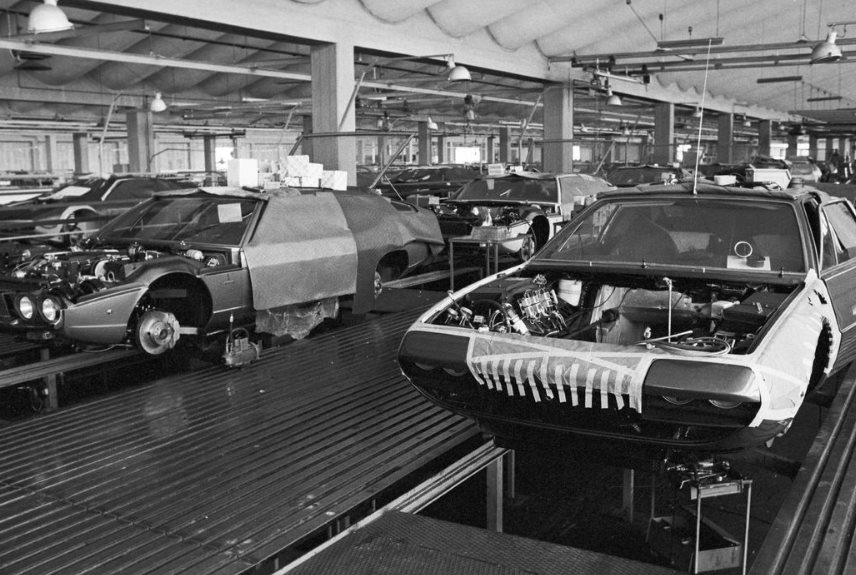Lamborghini struggles in the electric car revolution: Can the signature supercar without the rumbling noise attract customers?
- Tram Ho
According to the WSJ, Lamborghini, one of the most famous super luxury car brands, is hoping a little help from older models will bring its first all-electric sports car straight into the world. the heart – and of course the garage – of future fans.
In designing its first all-electric model, the Audi brand-owned Italian luxury carmaker drew inspiration from the Gran Turismo, an iconic sports car from the 1960.
Lamborghini CEO Stephan Winkelmann said in an interview that the return would make the new electric car instantly recognizable as a Lamborghini, even without the rumbling of the engine. petrol engine V12. Of course, up until this point, the specific designs and technologies underpinning the car remained intact…on the drawing board.
The transition to electric vehicles poses a different set of challenges for manufacturers of ultra-luxury vehicles than mass-market passenger cars. Uncertainty about whether customers will accept their electric vehicles is one of the reasons high-performance car manufacturers have been slower to develop all-electric vehicles.
Now, they’re looking to build a bridge for buyers between the old world of traditional luxury cars and the new electric future. To do so, they are echoing the past in their new designs, tapping into a legacy that their customers and fans understand.

For Lamborghini, that meant reviving the GT, a stylish touring car popular in the 1960s and 1970s. The company, which often builds very expensive small batches of cars, wanted to use the launch of the car. its first electric vehicle as a way to grow by entering a new market, while keeping production small to protect its exclusivity.
Today, Lamborghini has three models – the Huracán and Aventador sports cars, and the Urus SUV line. The Urus, launched in 2017, is the most recent addition and has helped Lamborghini increase sales and profits despite low production numbers. Last year, Lamborghini sold 8,303 vehicles worldwide, up from 7,250 the previous year. The Urus accounted for 5,240 units of total sales.
The rebooted GT will have to be different and take into account changes in tastes, Mr. Winkelmann said. It will also need to overcome some of the challenges of building all-electric sports cars that are heavier than internal combustion cars.
Mr. Winkelmann said Lamborghini’s designers thought the electric GT would still be a two-door with a rear seat, but with a more comfortable, roomier interior and would run better on the road due to the weight of the battery.
Other luxury automakers have drawn from their past when devising their first forays into electric vehicles, to develop new models that retain a strong identity, both in design and marketing around the launches.
When Rolls-Royce, owned by Bayerische Motoren Werke AG, announced its first electric vehicle called the Specter in October, it enhanced its marketing with numerous references to the company’s long past. company, including a quote from the company’s co-founder, Charles Stewart Rolls, who, the company said, predicted in 1900 that all cars would one day run on electricity.
“The electric car is completely noiseless and clean. No smell or vibration. They will become very useful when it is possible to arrange fixed charging stations,” he said at the time/
Despite its futuristic, digitally-powered interior design, the Specter carries the distinctive lines and design elements of any classic Rolls, from the iconic hood ornament .
Likewise, Porsche AG, the Volkswagen-owned sports car maker, unveiled its Taycan electric car with stories of how patriarch Ferdinand Porsche invented the first hybrid car, Lohner Porsche, which he presented at the 1900 World’s Fair in Paris. “The history of Porsche began with electricity,” Porsche said in a press release introducing the Taycan in September 2019.
The Taycan, too, carries a classic Porsche design, sporting lines that slope down from the hood towards the rear of the car, where the lines converge with the distinctive Porsche sculptural faces.
Lamborghini has a turbulent history. After a successful decade since its founding in 1963, Ferruccio Lamborghini sold the company. The business has since changed ownership several times. For a time it was owned by Chrysler, trying to expand the Italian sports car maker’s product portfolio and enter Formula One racing. Chrysler sold the company in 1987 to Megatech Corp. of Indonesia.
Lamborghini’s current chapter began in 1998, when Audi acquired the company and rebuilt the brand as a producer of ultra-luxury high-performance cars.
The new off-road version of the Huracán, called the Sterrato, will be limited to 1,499 vehicles scheduled to start in February. The Sterrato sports a V10 engine that has a top speed of 162 mph and in Europe costs around $270,000.
One challenge of the electric sports car transition is how the heavy batteries change handling, making it more difficult to grip the road in tight turns at high speeds, says Winkelmann. – a barrier that new technologies can help overcome.
“With a new, lighter battery, you can achieve something incredible. We think this will work,” he said.
Mr. Winkelmann emphasized that an electric Lamborghini must still look like a regular Lamborghini.
“The only thing different for an all-electric car is the sound of the engine,” he said. We are working on this.”
Source: WSJ
Source : Genk
